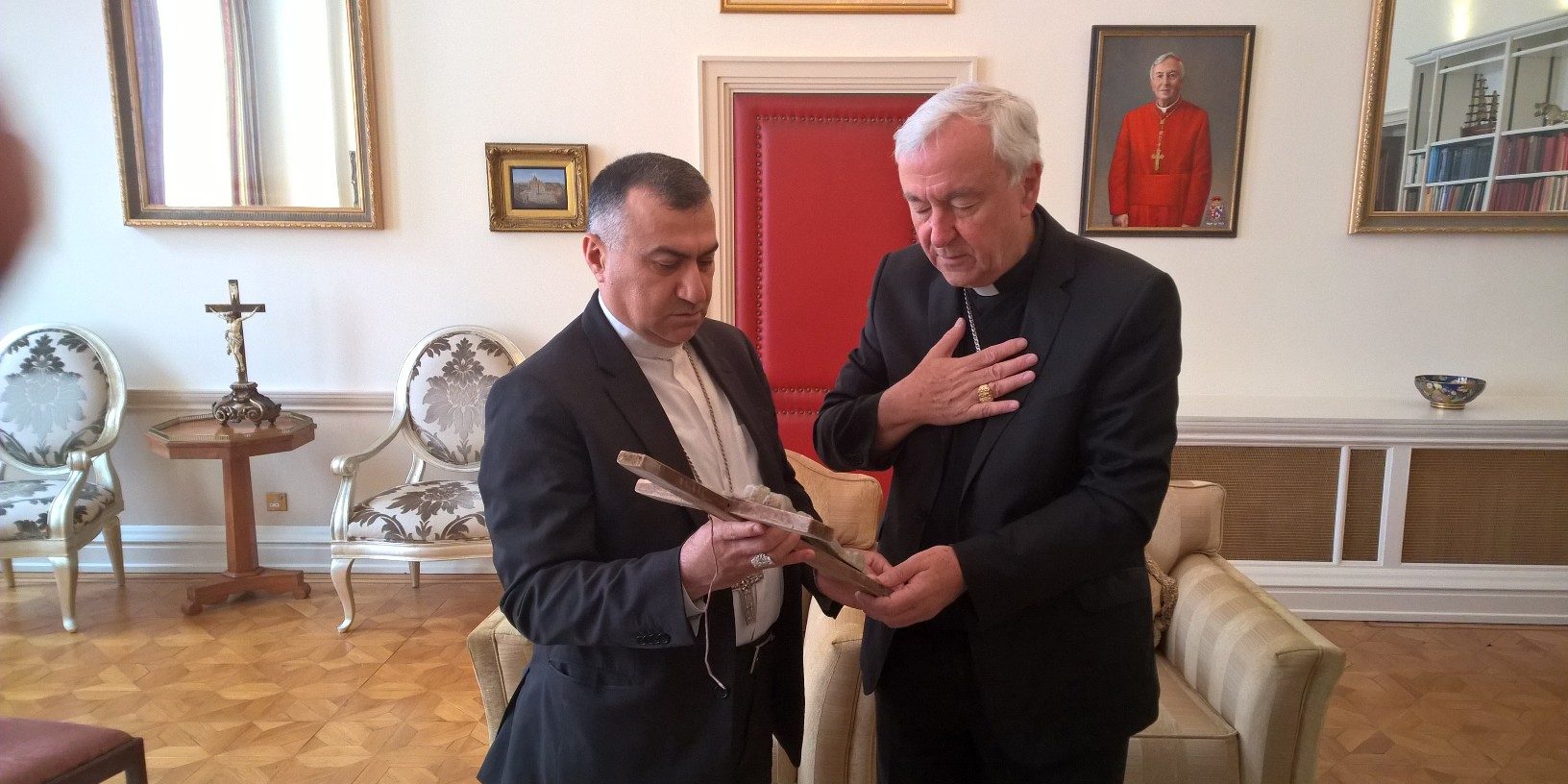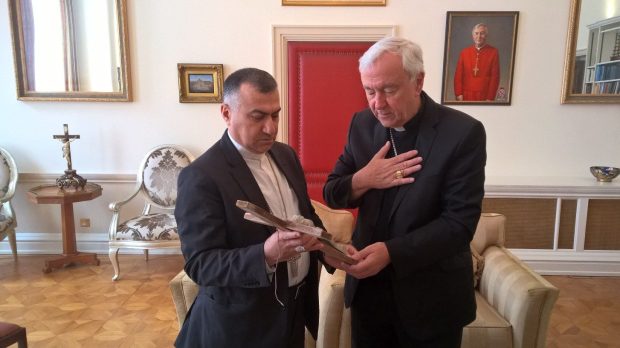Lenten Campaign 2025
This content is free of charge, as are all our articles.
Support us with a donation that is tax-deductible and enable us to continue to reach millions of readers.
While Pope Francis is in Iraq he will doubtless see a lot of devotees, but not so many Christian devotional items. The level of destruction during the ISIS years is still bewildering. Seven years ago, this became apparent in images of desecrated churches, defiled crucifixes and decapitated statues of Our Lady.
Now that comparatively peaceful times have returned to this ancient biblical land, there is some chance of reconstruction for what remains of Iraqi Christians and their heritage. Much of this progress is due to Catholic organizations. At the forefront has been Aid to the Church in Need UK.
It was one of ACN UK’s emissaries who salvaged a relic that gave hope at a time of desolation. In the ruins of St. George’s Church in the Chaldean Catholic village of Baqofa, Stephen Rasche stumbled upon a crucifix that had survived the iconoclastic onslaught. Far from pristine, and not an object of notable aesthetics, it was at least a survivor. Nobody knew much about the crucifix’s history. Seemingly made of cast iron, nailed to a plain wooden cross, this was an almost indestructible icon.

As its future in Iraq was uncertain at the time, the crucifix was sent to the UK and displayed at Westminster Cathedral. Although there was intentionally no fanfare, I remember being astonished by the number of visitors who gravitated towards this crucifix. Maybe its shabbiness was eye-catching amid the Byzantine splendor of the cathedral; I prefer to think there was some inner power that drew people to it.
The new arrival also attracted the attention of England’s premier Catholic cleric. Cardinal Vincent Nicholls blessed the cross in the presence of Archbishop Bashar Warda of Erbil, who had been invited to London by ACN UK. Word spread as far as the future head of the Church of England, Prince Charles, who also met up with the archbishop.
The crucifix is now safely back in Iraq, acting as the same beacon of hope that it did in the bleakest days of Daesh’s attempted genocide of Christians and other minorities. In the meantime, there have been initiatives to restore the towns of the biblical Nineveh Plains. Pope Francis will visiting there as part of his itinerary. It’s gratifying to hear reports that the local Muslim population has also been repairing some of the metaphorical bridges that were destroyed – along with some real churches.

The virtual Museum of the Cross
This crucifix was displayed in 2017 in an exhibition at Westminster Cathedral by the Museum of the Cross, the first institution dedicated to the diversity of the most powerful and far-reaching symbol in history. After 10 years of preparation, the museum was almost ready to open; then came COVID-19. In the meantime, the virtual museum has an Instagram account to engage with Aleteia readers and the stories of their own crucifixes: @crossXmuseum

